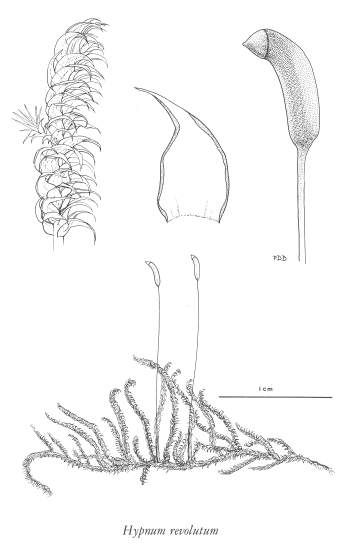E-Flora BC: Electronic Atlas of the Flora of British Columbia
Hypnum revolutum var. revolutum (Mitt.) Lindh.
moss Hypnaceae Species Account Author: Wilf Schofield Extracted from Some Common Mosses of British Columbia Introduction to the Bryophytes of BC
|
|||||||||||||

